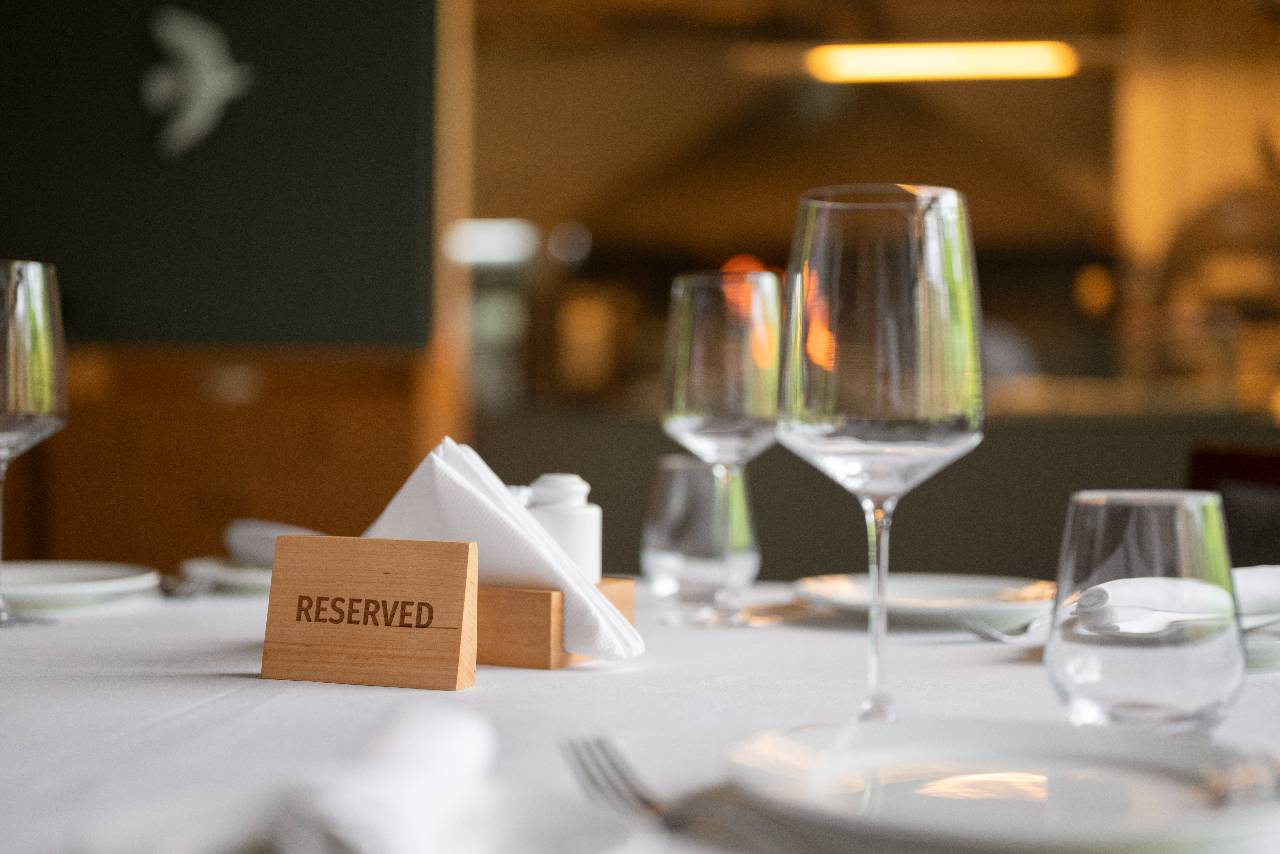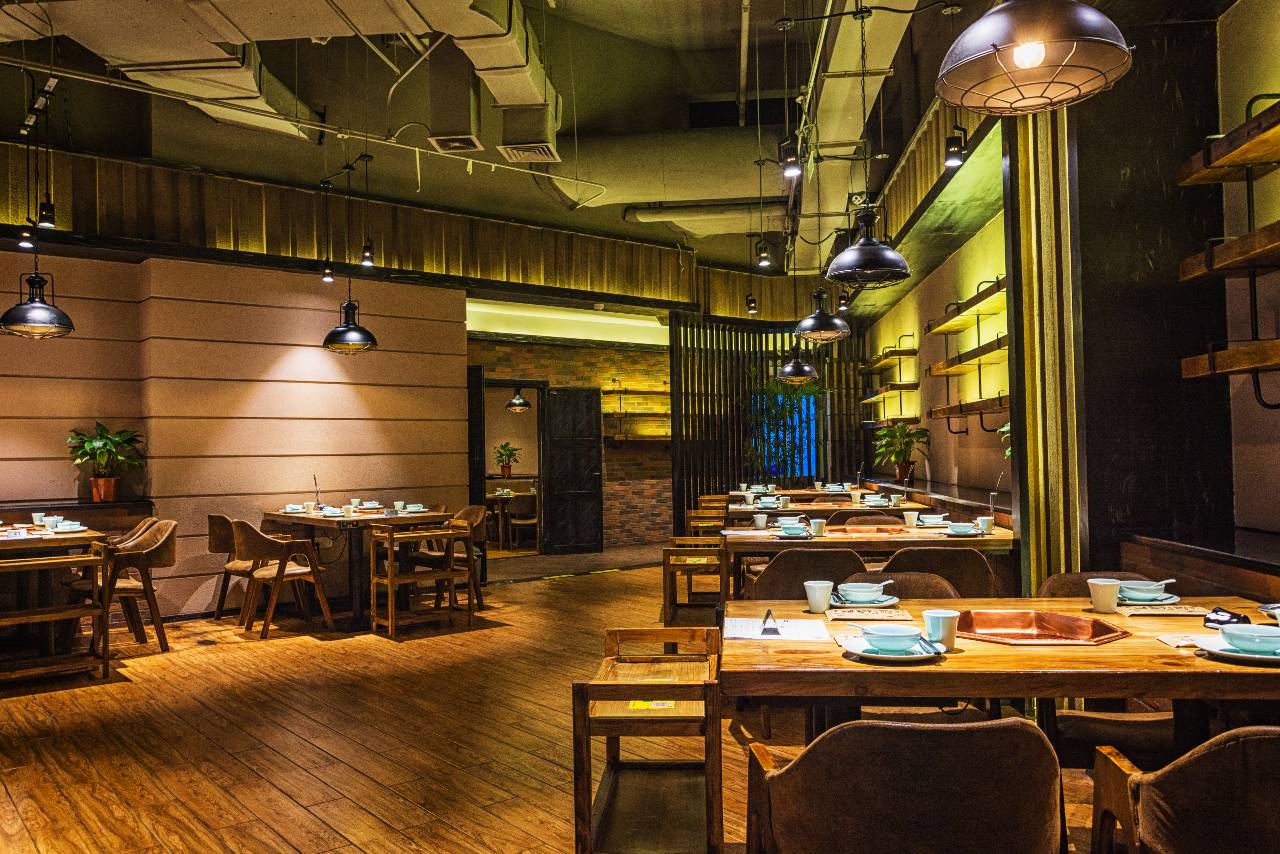How to Improve Table Turnover Without Rushing Your Guests
Learn how to improve table turnover by cutting wasted time, training staff, and using technology while keeping guests comfortable and happy.

Overview
Running a restaurant today is a balancing act. You need enough sales to cover food, labor, and rent, but you also want guests to feel relaxed and taken care of. Table turnover sits in the middle of this challenge.
If tables turn too slowly, your waitlist grows, people walk away, and you miss chances to seat paying guests during your busiest times. If you move too fast, guests feel pushed out and may not return. The goal is not to rush people. The goal is to cut the empty time where nothing useful is happening.
In many restaurants, there are quiet gaps that add up - slow greetings, delays in taking orders, long ticket times, and checks that sit on the table too long. Often, reducing the average visit by just 5-10 minutes can allow an extra seating at key times.

Know Your Numbers
Before you try to speed up table turnover, you need a clear picture of what is happening in your dining room today. Many owners guess. The problem with guessing is you can't tell if your changes are actually helping or just adding stress. A few basic numbers will give you a solid starting point.
Start with these core metrics -
1. Average dining time - From the moment guests are seated to the moment they pay and leave.
2. Seatings per table per shift - How many different parties sit at the same table in a lunch or dinner service.
3. Ticket time - How long it takes from when the order is sent to the kitchen to when the food is ready.
4. Payment time - How long the check sits on the table before it's paid and closed.
You can pull most of this from your POS. For example, look at -
- Time between "seat" and "check open" (greeting and ordering delays)
- Time between "order sent" and "items completed" (kitchen speed)
- Time between "check printed" and "check closed" (payment delays)
Pick one or two peak shifts to review first - like Friday dinner or Saturday lunch. Calculate your current average dining time and average turns per table. Then set a small, realistic goal. Instead of trying to cut 30 minutes, aim to reduce the visit by5-10 minutes. For many restaurants, that alone can create one extra turn for high-demand tables.
Share these numbers with your managers and key staff. Explain that the goal is to remove wasted time, not rush guests. When your team understands the baseline and the target, they can help spot the small delays that add up - slow greets, long gaps between courses, or checks not being dropped at the right moment.
Once you know your numbers, every change you make in the rest of this guide can be measured. You'll be able to see what actually improves table turnover and what just sounds good in theory.
Fix Bottlenecks Before Guests Sit Down
Table turnover problems often start before a guest ever touches a menu. If your front door, host stand, or seating process is slow or confusing, you lose time and frustrate guests right away. Cleaning this up can give you faster turns without changing anything at the table.
Start with how guests arrive and wait. If you take reservations, make sure the time slots match your real average dining time. For example, if most visits are 75-90 minutes, don't book tables every 60 minutes. You'll create backups and longer waits. If you use a waitlist, use clear time windows and update guests honestly. People are more patient when they know what to expect.
Your host stand is like a traffic control center. Train hosts to -
- Seat guests as soon as a clean table is ready
- Match party size to table size whenever possible
- Avoid leaving several "open but dirty" tables at once
- Rotate sections so servers stay busy but not overloaded
"Empty but not ready" tables are a common hidden time waster. A guest has already left, but the table sits dirty while the busser or server is tied up. Set a clear goal, like - "Every table is cleared and reset within 3-5 minutes of guests leaving" You can support this with simple habits - servers calling for a busser as soon as the check is paid, or managers jumping in during a rush.
Think about entrance flow as well. Is there a clear spot for guests to check in? Is the path to the dining room crowded or blocked by takeout orders and staff traffic? A tight, cluttered entrance slows seating and creates stress. Small changes - moving a shelf, shifting a stand, or marking a clear line - can help keep people moving.
By fixing these front-door and seating bottlenecks, you start each visit on time. That means less waiting, a smoother shift for your staff, and more chances to seat paying guests during your busiest hours.
Speed Up Ordering Without Making Guests Feel Rushed
A lot of time is lost between guests sitting down and the order reaching the kitchen. The goal is to make this part of the visit smooth and clear, not rushed or stressful. You want guests to decide faster because things are simple, not because they feel pushed.
Start with your menu design. Long, crowded menus slow people down. Make it easy to scan -
- Use clear sections (Starters, Mains, Specials, Kids, etc.)
- Highlight best-sellers or "quick-fire" items that the kitchen can produce fast
- Remove or simplify dishes that always cause delays or special questions
Next, focus on greeting and drink timing. A good basic standard is -
- Greet the table within 1-2 minutes of being seated
- Take drink orders right away and bring them quickly
- Mention one or two popular items or specials to guide choices
Train servers to read the table. A business lunch might want to order quickly. A date night might need a bit more time. Simple phrases can help move things along without pressure, such as -
- "Can I answer any questions about the menu?"
- "Would you like me to put in an appetizer while you look over mains?"
- "Are you ready to order, or do you need another minute?"
Use pre-shift meetings to review 86'd items, long-prep dishes, and recommended pairings. When servers know the menu well, they can answer questions quickly and suggest options that fit what the guest wants and what the kitchen can cook efficiently.
If you use handheld or mobile POS devices, let servers enter orders at the table instead of walking back to a station. This can shave a few minutes off each ticket, especially during busy hours.
By tightening up the ordering process, you reduce dead time at the start of the meal. Guests get what they want faster, the kitchen gets a steadier flow of tickets, and your tables move at a better pace without anyone feeling rushed.

Tighten Coordination Between FOH and BOH
Even if your hosts and servers move quickly, table turnover will slow down if the kitchen is backed up or timing is inconsistent. Strong coordination between the front of house (FOH) and back of house (BOH) keeps meals moving at a steady, predictable pace.
Start by setting clear ticket time goals. For example -
- Starters out in 8-10 minutes
- Lunch mains in 12-15 minutes
- Dinner mains in 15-20 minutes
- Desserts in 5-8 minutes
These are examples - you should adjust them based on your menu and equipment. The key is that everyone knows the targets and checks them regularly.
Define firing and coursing rules so servers know exactly when to send each part of the order. Common problems include -
- All items fired at once, causing appetizers and mains to collide
- Long gaps between courses because no one called the next fire
- Food sitting in the window because the server wasn't ready to run it
Use an expo (expediter) during busy times if you can. This person checks plates for accuracy and presentation, calls out orders, and keeps communication clear. Runners can help get food to tables faster, so servers can stay focused on guests.
Simple tools help too. Kitchen display systems (KDS), clear ticket printing, or even basic verbal cues in a smaller operation all reduce confusion. What matters is that FOH and BOH share the same plan.
Review ticket times after busy shifts. If certain dishes always slow you down, adjust the recipe, prep work, or how often you offer them. Sometimes trimming or changing a few problem menu items does more for table turnover than any front-of-house change.
When FOH and BOH work as one team instead of separate sides, food comes out at the right pace, guests are happier, and tables turn on time without anyone feeling rushed.
Make Table Clearing and Payment Effortless
Even after guests finish eating, a lot of time can still be lost. Plates sit on the table, checks arrive late, and payment takes longer than it should. Cleaning up this part of the visit is one of the easiest ways to improve table turnover without cutting into the dining experience.
Start with pre-bussing. Train servers and bussers to clear plates and glasses as guests finish with them, instead of waiting until the very end. This makes the table look cleaner and signals the natural flow of the meal. Simple habits help, like -
- Clearing empty appetizer plates when mains arrive
- Picking up extra baskets, bottles, and napkins during drink refills
- Offering boxes as soon as it's clear guests are done eating
Next, focus on the check process. A common standard is -
- Drop the check shortly after guests are done eating, unless they clearly want to stay longer
- Ask, "Can I bring the check for you?" to avoid surprises
- Return with the payment or card reader quickly - aim for a few minutes, not ten
Payment should be as smooth as possible. Options include -
- Handheld card readers at the table
- QR codes for pay-at-table
- Clear steps for splitting checks so staff aren't stuck at the POS
Teach staff to watch body language. Guests who stack plates, close menus, or push chairs back are often ready to go. That's the time to offer boxes, dessert, or the check - depending on the style of your restaurant.
Finally, make sure cleared tables are reset fast. Set a rule like "tables cleared and reset within 3-5 minutes." Support this with enough bussing help during busy times.
When clearing and payment run smoothly, guests leave when they are ready, not later. You open up tables faster, keep waits shorter, and protect the guest experience at the same time.
Train Your Team to Protect the Guest Experience
You can adjust menus, floor plans, and systems, but your team is what truly controls table turnover. When staff understand the "why" behind faster turns - and how to do it without making guests feel rushed - they can make small, smart choices all shift long.
Start by setting clear service standards. Examples -
- Greet every table within 1-2 minutes
- Take drink orders on the first visit, food on the second
- Check back within a few bites of food arriving
- Drop the check soon after guests finish, unless they clearly want to linger
Write these standards down, and review them in pre-shift meetings. Make it clear these are not about pushing guests out, but about removing long, silent gaps where guests are waiting on you.
Give your team simple phrases that support a steady pace -
- "Can I get anything started for you while you look over the rest of the menu?"
- "Would you like the check now, or a bit later?"
- "If you're ready, I can take your order now."
These lines give guests control while gently moving the visit forward.
Train staff to work as a turnover team, not just as individuals. Hosts, servers, bussers, runners, and managers should all see open, clean tables as a shared goal. That might mean -
- Servers asking for bussing help as soon as tables leave
- Bussers letting hosts know the moment a section is ready
- Managers jumping in to run food or reset tables during a rush
Finally, use coaching and feedback. Share metrics like average dining time and turns per server. Celebrate when goals are met, and talk through problem shifts without blame. When the team understands that efficient service brings better tips, smoother nights, and happier guests, they are much more likely to embrace the changes.
Integrate Technology
Technology can quietly remove many of the delays that slow your table turnover. The key is to use tools that make life easier for guests and staff, not more complicated.
Start with a mobile POS system. When servers can take orders and payments at the table, you cut out trips back and forth to a stationary terminal. Orders reach the kitchen faster, and checks are closed sooner. This is especially helpful during peak times when every extra minute matters.
Next, look at digital reservations and waitlist systems. These tools help you -
- Control the flow of guests based on your real average dining time
- Reduce "no-shows" with automatic reminders
- Give accurate wait-time estimates
- Send a text when a table is ready so guests aren't crowding the host stand
This leads to smoother seating, fewer gaps, and less stress for your host team.
Online ordering can also support better table turnover. When some guests order takeout during your busiest hours, you reduce pressure on the dining room. Just make sure the kitchen has a clear way to balance dine-in and online orders so one does not hurt the other.
Finally, use your data. Your POS and reservation tools can show -
- Average visit length by day and time
- Ticket times by item or section
- Peak arrival times and slow periods
- Which tables or sections turn fastest or slowest
Review this data regularly with your managers. Look for patterns - a certain menu item that always slows the kitchen, a shift where payment times run long, or a section where turns lag behind. Small adjustments based on real numbers - changing staffing, simplifying a dish, or tightening payment steps - can help you turn tables faster while still giving guests a smooth, friendly experience.